How to Share Canva Templates: A Step-by-Step Canva Tutorial
Unlock seamless design collaboration with our step-by-step guide on how to share Canva templates. Ideal for designers, marketers, and educators, learn to distribute creative work and maintain brand consistency across your team with Canva's easy sharing features in a digital-first world.
Sharing your creative work efficiently and effectively is vital in today's collaborative and digital-first environment. Canva, a popular graphic design platform, enables its users to create and share their designs with ease. Whether you're a professional designer looking to streamline your workflow, a marketer sharing brand templates, or an educator providing resources, Canva's sharing options are designed to facilitate a seamless exchange of ideas and designs. Canva templates serve as a starting point for creating consistent graphics, ensuring that anyone on your team can produce on-brand content without starting from scratch every time.
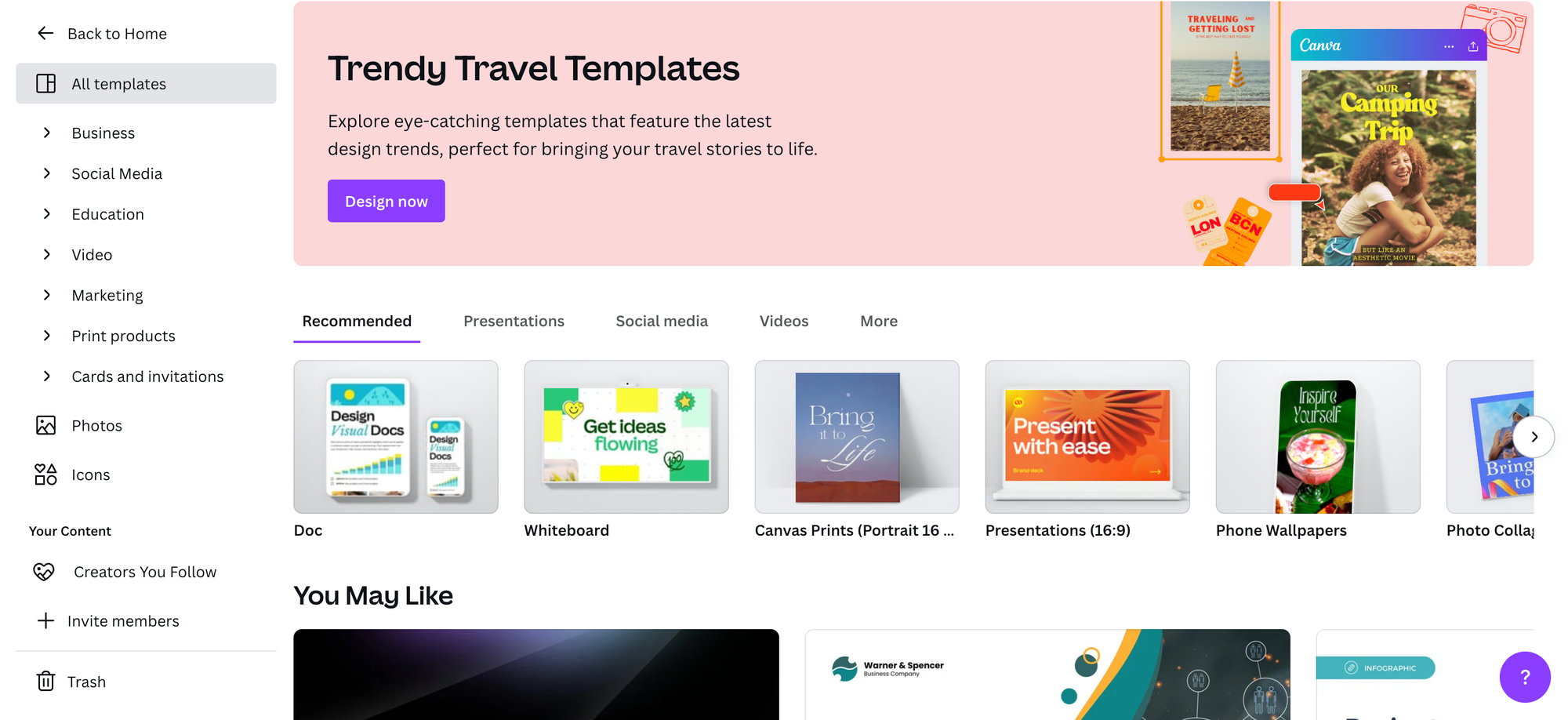
Navigating through Canva's sharing capabilities is straightforward. With options to share for view-only access, as editable designs, or as a template for others to use, there are multiple layers of sharing that suit various needs. Canva also offers the ability to manage permissions, giving designers control over who can edit or comment on shared designs. This control helps maintain the integrity of the original template while still allowing for necessary collaboration and input.
Key Takeaways
- Canva templates allow for consistent brand and design work across teams.
- Multiple sharing options cater to different needs such as view-only or editable access.
- Permission management ensures control over the template editing process.
Understanding Canva Templates
Canva templates are pre-designed layouts that provide a foundation for users to create their own unique designs. These templates offer a range of design elements tailored for various purposes and can significantly streamline the creative process.
Canva's Template Features
Canva offers an extensive library of templates encompassing a vast array of themes and styles. One can find templates for social media posts, presentations, posters, and more. Each template includes customizable design elements such as images, fonts, and color schemes, enabling users to tailor their creations to specific needs or branding guidelines. Additionally, Canva's interface allows for easy editing and collaboration, which makes it possible to modify templates without any advanced design knowledge.
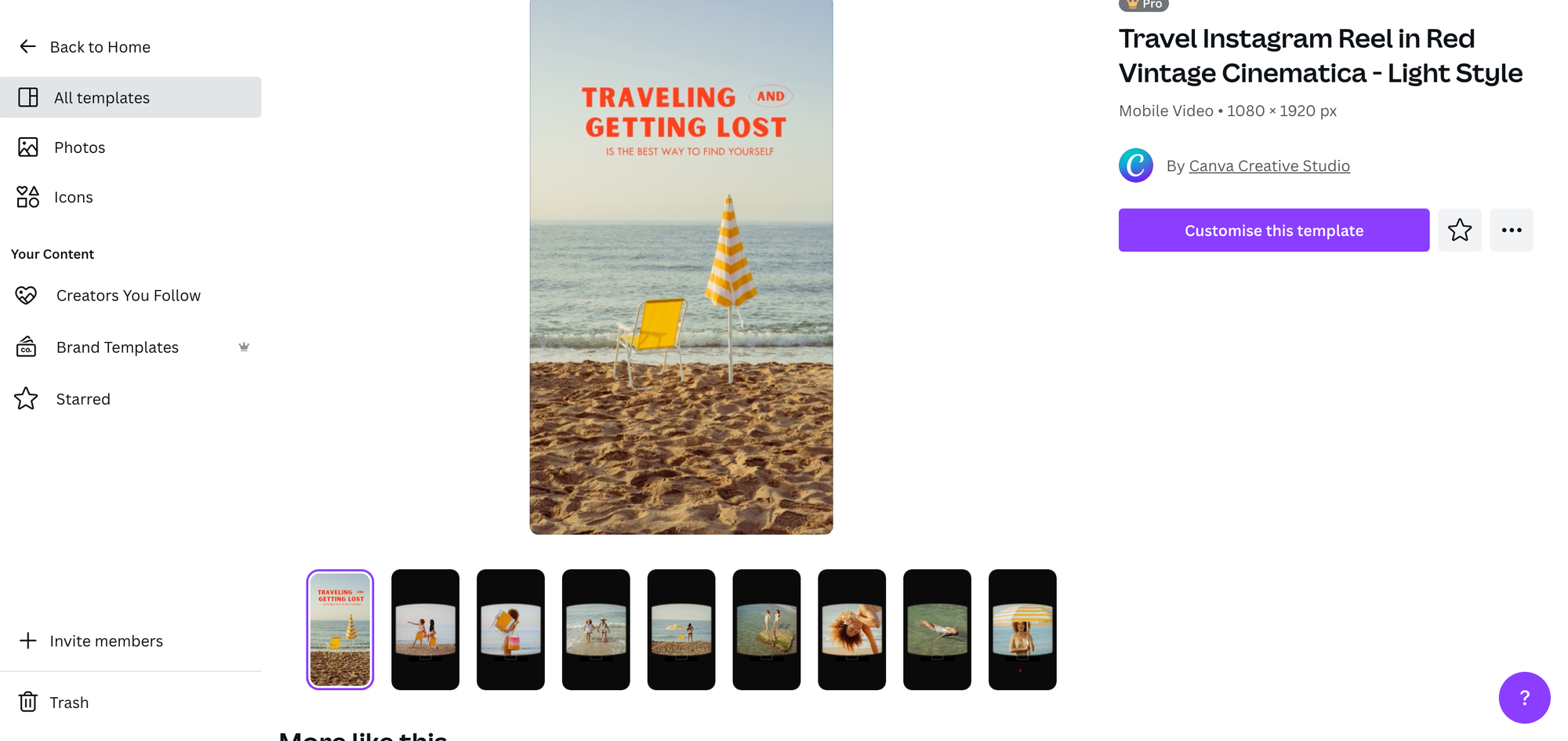
Importance of Template Sharing
Sharing Canva templates is crucial for efficient collaboration and consistency in branding or project development. When a user shares a template, they enable others to use that design as a starting point, preserving the original layout and style. This sharing promotes a cohesive visual identity across various media and allows teams to work together effectively even if they are geographically dispersed. The ability to share and use Canva templates can also empower educators and businesses to maintain a standard quality and appearance across all design materials.
How to Create and Save Your First Canva Template
Creating a template in Canva streamlines the design process and ensures consistency across various graphics. It is vital that one pays attention to the selection of elements and organization within Canva's platform to produce a reliable and reusable template.
Selecting the Right Design Elements
When embarking on template creation, it's crucial to select appropriate design elements that align with the intended message or brand identity. This includes choosing a suitable color scheme, font pairings, and adding images that resonate with the target audience. Begin by selecting a blank canvas or one of Canva's pre-designed layouts as a starting point. Next, incorporate elements that are not only aesthetically pleasing but also functional within the design's context.
- Color Palette: Choose a palette that reflects the brand or purpose of the design. Limit the palette to a few cohesive colors.
- Fonts: Select fonts that are readable and complement each other. Consider the fonts' impact on the design's tone.
- Images: Utilize relevant and high-quality images, which can be sourced from Canva's vast library or uploaded if custom imagery is needed.
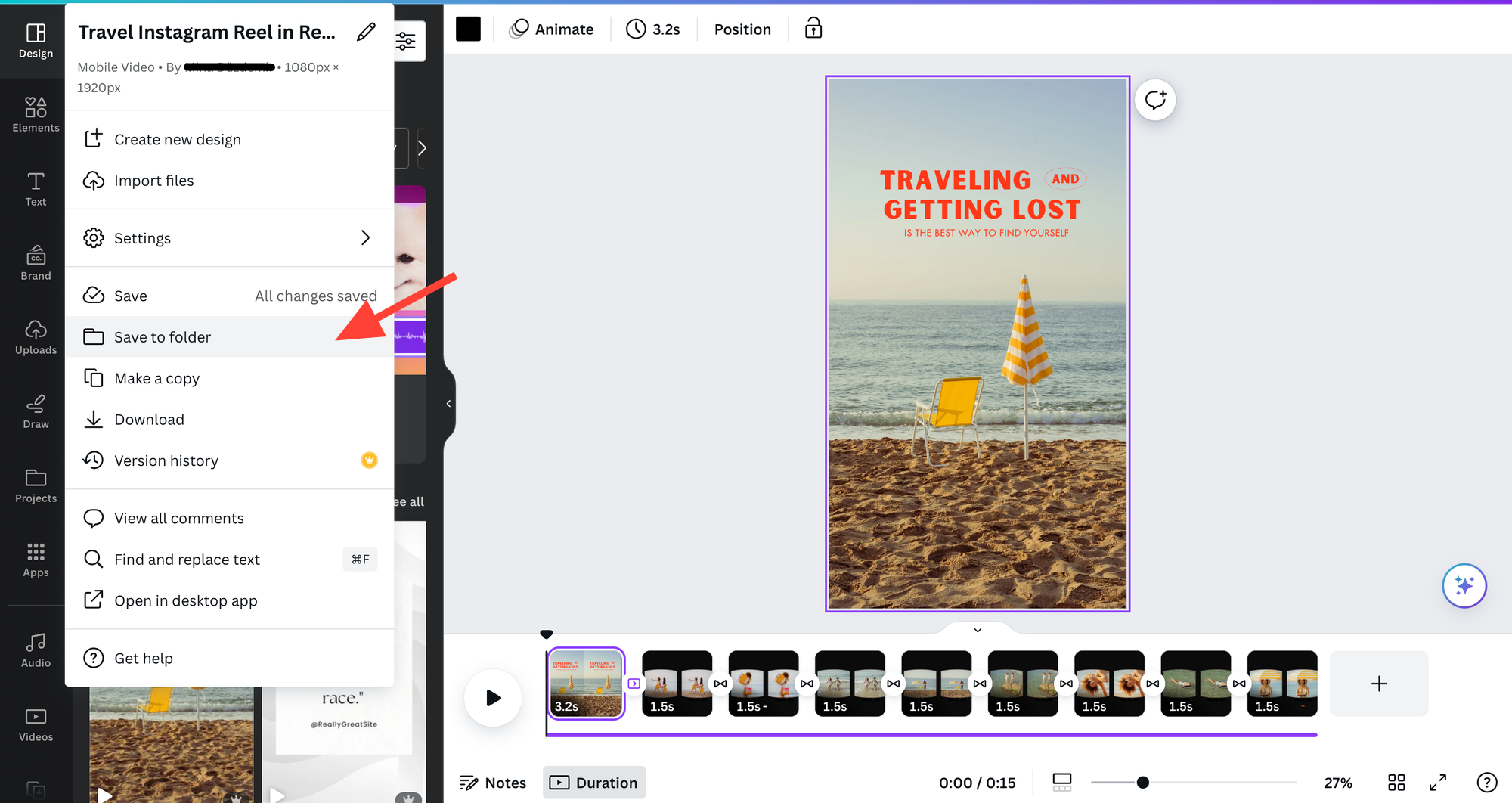
Saving and Organizing in Folders
Once the template design meets satisfaction, it is important to save and categorize it for ease of future access. In Canva, saving a design as a template allows for easy reusability, and organizing templates into folders ensures efficient management of one's designs.
- Saving: Click on the 'Save' button frequently while designing to prevent any loss of work. To save the design as a template, click on 'File', then 'Save as Template'.
- Folders: To organize designs into folders, go to the Canva homepage, select 'All your designs', hover over the created template, click the '•••' (more) button, and choose the 'Move to folder' option. Here, either select an existing folder or create a new one.
Personalizing Templates
Personalizing a Canva template allows the user to tailor designs to their specific needs by changing elements like text and images and ensuring brand consistency with brand kits.
Customizing Text and Images
Users can customize text within Canva templates to fit their message by selecting the text element and typing in the new content. They can also adjust the font size, style, and color to match the desired aesthetic. For images, users have the option to replace default visuals with their own or choose from Canva’s extensive library. To edit images, one simply needs to click on the existing image and either upload a new one or select from available assets.
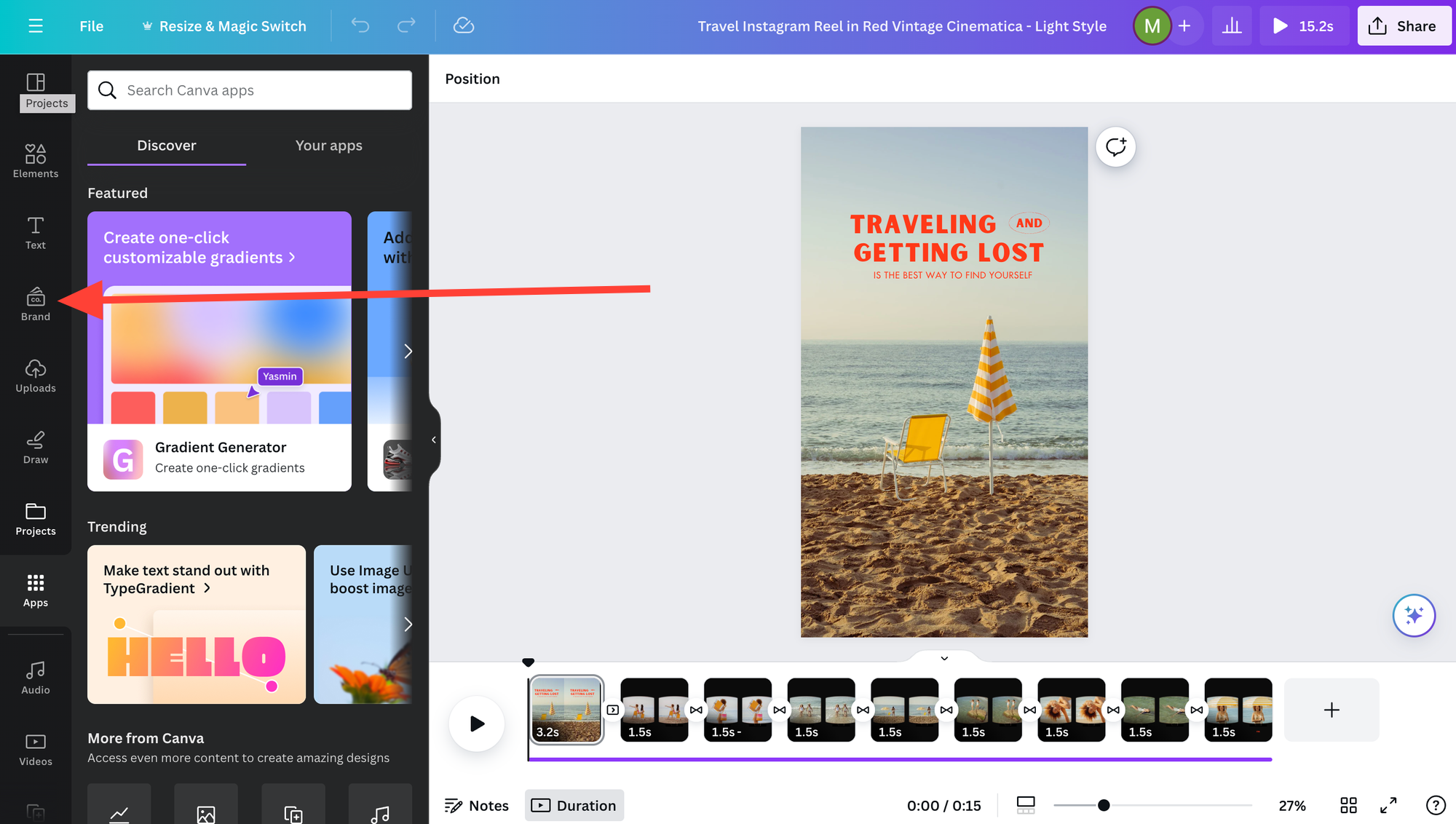
Using Brand Kits for Consistency
For those needing to adhere to brand standards, Canva’s brand kit feature is essential. It allows users to save their brand colors, fonts, and logos for consistent use across all designs. By applying a brand kit, all templates can instantly reflect a company’s brand identity, maintaining a cohesive look across various materials. Users can access the brand kit by navigating to the account settings and uploading their specific brand assets.
Collaborative Features in Canva
Canva's collaborative features empower users to work together efficiently on design projects. Whether it's real-time editing or sharing resources across a team, Canva provides tools to streamline the collaborative process.
Real-Time Collaboration
Canva enables real-time collaboration allowing multiple users to work on the same design simultaneously. When a user is editing, their changes appear instantly on the screens of all other collaborators. This feature enhances productivity as it allows for immediate feedback and alterations, ensuring that the creative process is a synchronous and dynamic experience.
Team Collaboration and Canva for Teams
Canva for Teams is designed for group projects and extended collaboration. Teams can create and share design folders, with the ability to set different access rights like 'view' or 'edit'. This fosters a well-organized workflow as responsibilities can be clearly divided among team members. In addition, Canva for Teams offers a centralized space for all design assets, which simplifies the process of managing and distributing brand-consistent materials.
Managing Template Permissions
When sharing designs on Canva, users have control over how their templates are handled by others. Proper management of permissions ensures that templates are edited and viewed by the right people.
Setting Edit and View Permissions
To set permissions, one must first open the design and click on Share. Within the People with access dropdown, the creator can adjust whether a user, team, or group has the ability to edit or just view the design. By clicking on the permissions icon next to a user’s name, options to change their level of access are presented. Granting Can edit permissions allows users to make changes and comments, while Can view only allows for viewing without the ability to alter the original template.
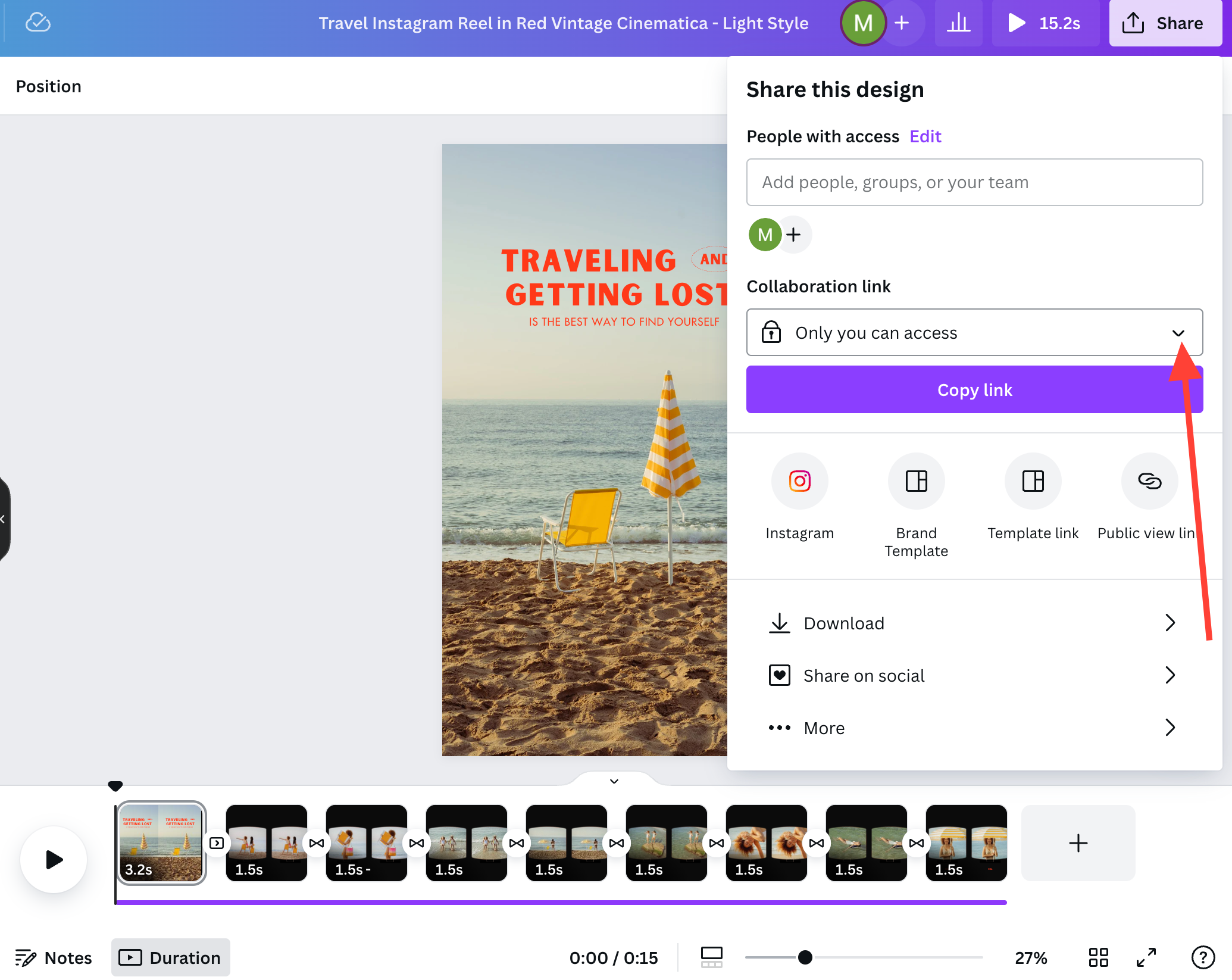
Understanding Canva Pro Permissions
Canva Pro users benefit from advanced permission settings, which allow for a more granular level of access control. For instance, a Canva Pro account enables the owner to restrict downloads and lock elements within a design, preventing unauthorized changes to sensitive components. Additionally, with Canva Pro, one can assign templates to specific team templates making them easily accessible to the entire team while still controlling who has edit access.
Managing template permissions is a straightforward process in Canva, with a clear distinction between edit and view roles, and additional benefits for Canva Pro subscribers to protect their creative work.
Sharing Canva Templates
When it comes to sharing Canva templates, users have two efficient methods: through shareable links or directly via email. Both approaches enable seamless collaboration and easy distribution of designs for beginners and advanced users alike.
Using Shareable Links
To share a Canva template via a shareable link, a user first needs to create a link in Canva. The steps are straightforward:
- Open the desired design in Canva.
- Select Share from the top menu bar on the right side.
- Select 'Template link' from the options.
- Click on Create template link.
- Copy the link provided and share it with the intended recipients.
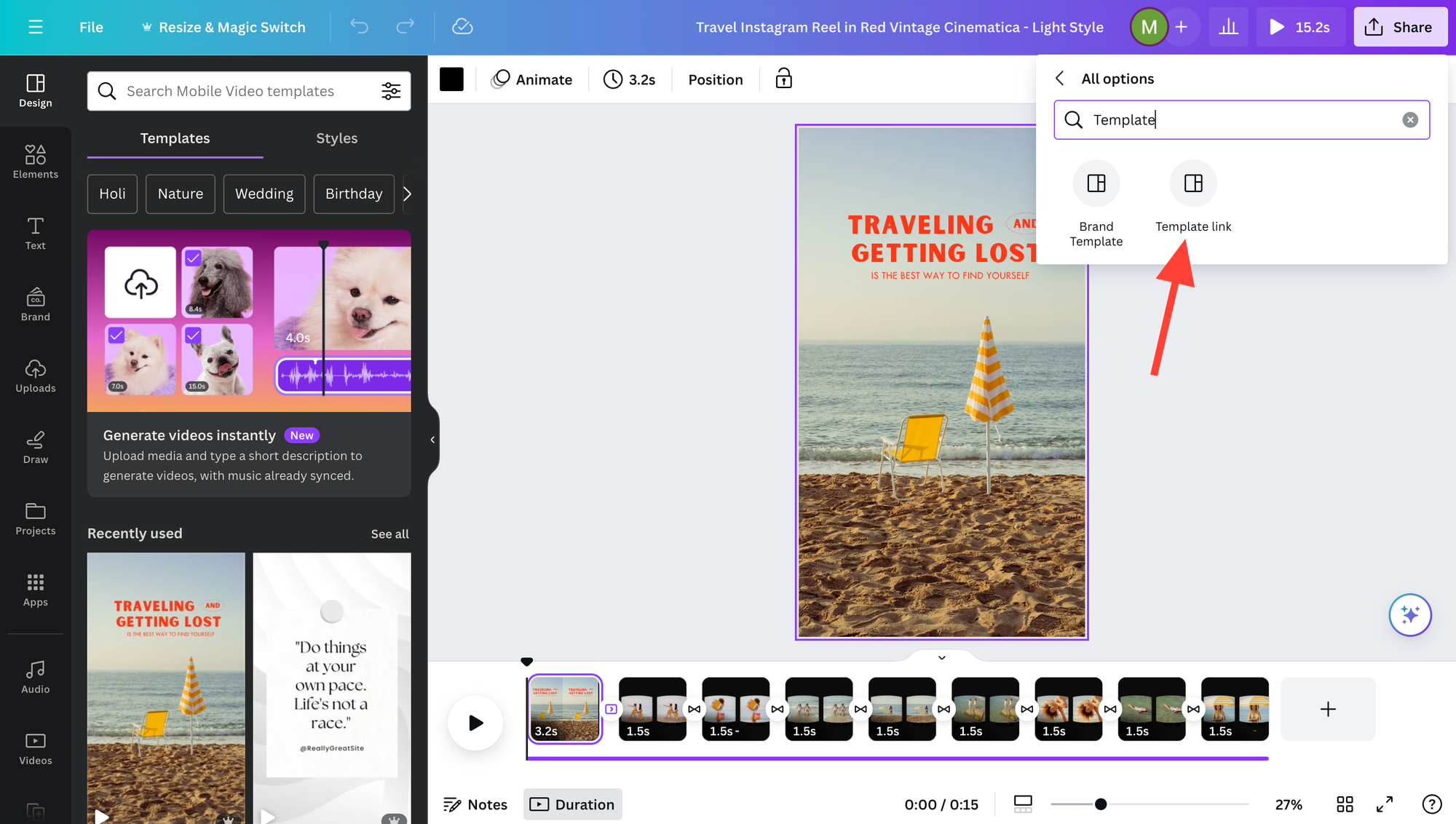
A shareable link allows users to access the design as a template, giving them the capability to edit their own version without altering the original. For those looking to distribute their design widely, this method is particularly helpful, as the same link can be used by multiple people.
Sending Templates by Email
For sending a template directly to specific email addresses, the process involves a few additional steps:
- Open the template in Canva.
- Click on the Share button at the top of the page.
- Choose 'Email' to send the design directly.
- Enter the recipient's email addresses.
- Optionally, add a message if needed.
- Click Send.
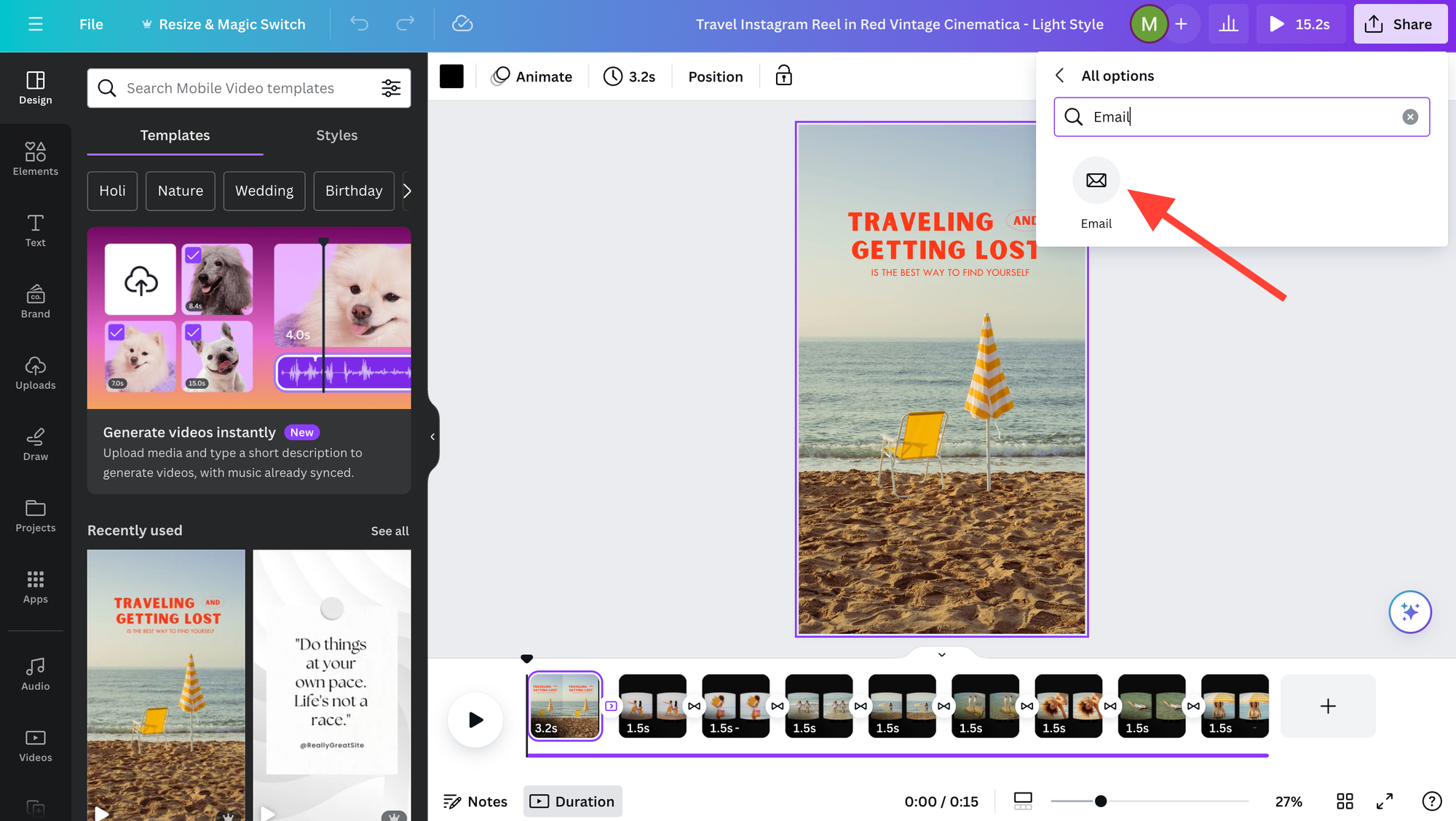
Sending templates by email is ideal when users want to share their design with a select group of people or for a more personalized distribution. Each recipient receives an invite and can then work on their own copy of the template.
Advanced Sharing Options
When sharing Canva templates, users have advanced options that allow for seamless integration with social media platforms and efficient distribution to external clients. These features enable collaborative feedback and tailored viewing experiences through both public and private links.
Social Media Integration
Canva offers users the ability to directly share their designs on various social media platforms. One can generate a share link to watch, which allows followers and fans to view the design. This is particularly useful for social media managers and content creators who need to showcase their work promptly:
- Instagram & Facebook: Share a template with a link that viewers can watch and comment on.
- Twitter & LinkedIn: Distribute links that directly display the template in the post for immediate feedback.
Disclaimer: Users should always verify that their share settings are configured to public if they want the design to be accessible to all social media users or private if the content is meant for a select audience.
Sharing With External Clients
For those working with external clients, for example if you want to sell Canva templates or just connect with other people, the share options are crafted to simplify collaboration:
- Private Sharing:
- Templates can be shared via a private link that clients can use to leave feedback without making the design publicly accessible.
- To maintain privacy, users should ensure the link settings restrict editing access, allowing clients to comment but not alter the original design.
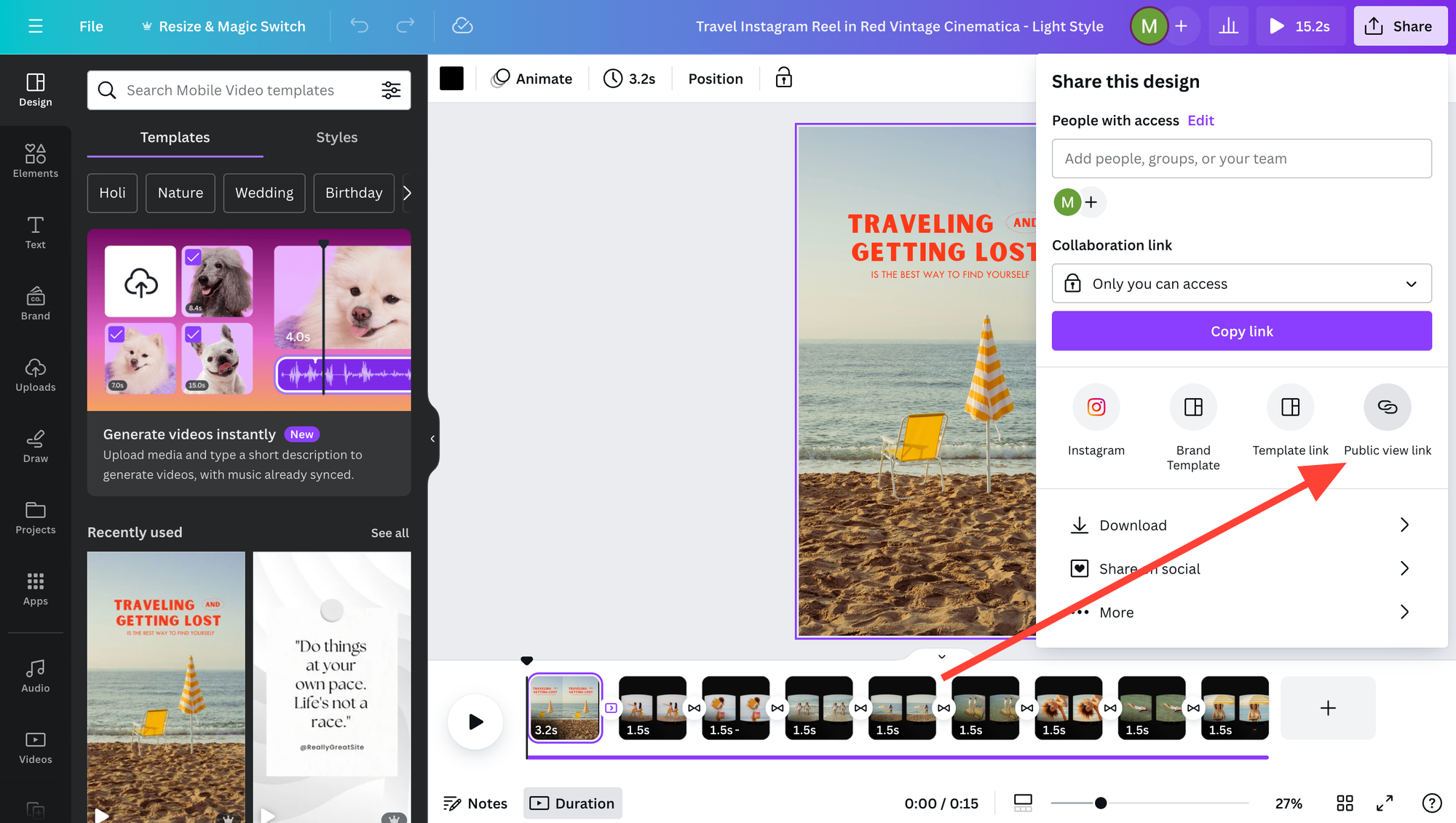
- Public Sharing:
- In cases where a broader audience viewing is required, e.g. for Etsy, designers can opt for a public link.
- Public links are ideal for clients who prefer to share designs with their teams or through their networks for wider commentary.
By utilizing these advanced sharing options, Canva enhances the user experience, making it more interactive and client-friendly. Who knows if this will be your next passive income alternative?
Best Practices for Canva Template Sharing
Sharing Canva templates effectively maximizes productivity and efficiency within a collaborative environment. Implementing an efficient workflow and utilizing Canva's robust features ensures smooth communication and the collection of actionable feedback.
Efficient Workflow Management
An efficient workflow is paramount when sharing Canva templates. They should use Canva's sharing option to maintain a streamlined process, ensuring that each member gets the correct version of the template. Utilizing collaborative folders significantly helps in organizing designs and templates relevant to different teams or projects. One can share a Canva design as a template such that recipients can make edits without affecting the original. It's valuable to standardize the protocol for naming files and versioning to prevent confusion among team members.
Leveraging Canva Features for Productivity
Canva offers a suite of features to amplify productivity. Teams should leverage the ability to share their design as a template link, allowing others to use the design without altering the source file. Additionally, setting permission levels is crucial for maintaining template integrity. For instance, choosing 'view only' can prevent unintended edits whereas providing 'edit access' invites collaboration. Encouraging team members to leave comments directly on the design facilitates clear communication and precise feedback, making the revision process more efficient.
Troubleshooting Common Issues
When sharing Canva templates, users sometimes encounter hiccups with link sharing and template access. This section addresses these issues and provides straightforward solutions to ensure seamless collaboration and editing.
Link Sharing Problems
Issue: The recipient cannot view the shared template link.
- Solution: Verify that the link is correct and that it hasn't been deleted. If necessary, regenerate the sharing link from the design page in Canva (Learn how to share a design).
Template Access and Editing Concerns
Issue: A user has the template link but cannot access it to view or edit.
- Solution:
- Confirm that the template hasn't been deleted.
- Ensure the user is logged into the correct Canva account that has permission to access the template.
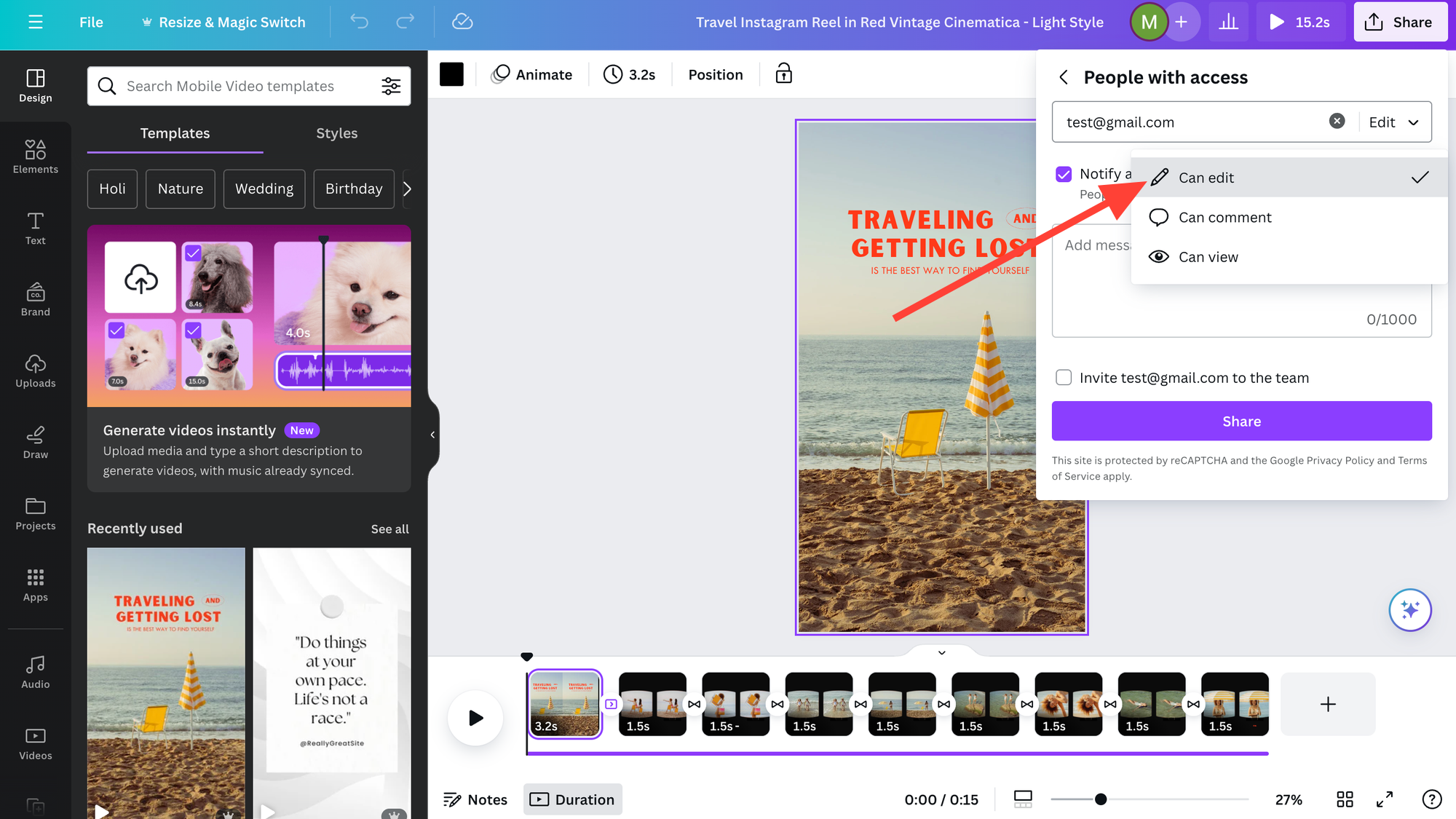
Issue: The user can view the template but cannot make changes.
- Solution:
- Verify that the user has the correct permission level. Only those with 'Can edit' access can make changes to the template. Modify permissions through the 'Share' settings if necessary (How to see shared templates in Canva).
Frequently Asked Questions
This section addresses common inquiries regarding the creation, sharing, and troubleshooting of Canva templates. These answers provide straightforward guidance for optimizing collaboration within the Canva platform.
How can I create a template in Canva that others can edit?
To create an editable template in Canva, simply design your project as usual. Once finished, click on the 'Share' button and select 'Share a link to edit.' By doing so, others can make edits to the design, ensuring collaborative work.
What is the process for sharing a folder with a client in Canva?
When sharing a folder in Canva, click on the folder you want to share and select 'Share' from the options. Choose 'Invite members to folder,' you can enter your client's email to share access directly, allowing them to view and edit folder contents.
How do I enable link sharing for my Canva designs?
To enable link sharing, open the desired design, click on 'Share,' and then choose 'Share a link to use as a template.' This allows you to copy the link which you can then distribute to others, granting them access to use your design as a template.
Is it possible to share all of my Canva designs at once?
Currently, Canva does not offer a direct feature to share all designs at once. Users must share each design individually or group designs into a folder to share multiple designs together.
How can I access templates that have been shared with me on Canva?
Accessing shared templates in Canva is straightforward. You will receive a notification or an email with a link. Click on the link to access the template directly in Canva, where you can use it as intended.
What steps should I take if I'm experiencing issues with sharing on Canva?
If sharing issues arise, ensure you have the correct permissions and the user you're sharing with has a Canva account. If problems persist, contact Canva's Help Center for further assistance and troubleshooting advice.